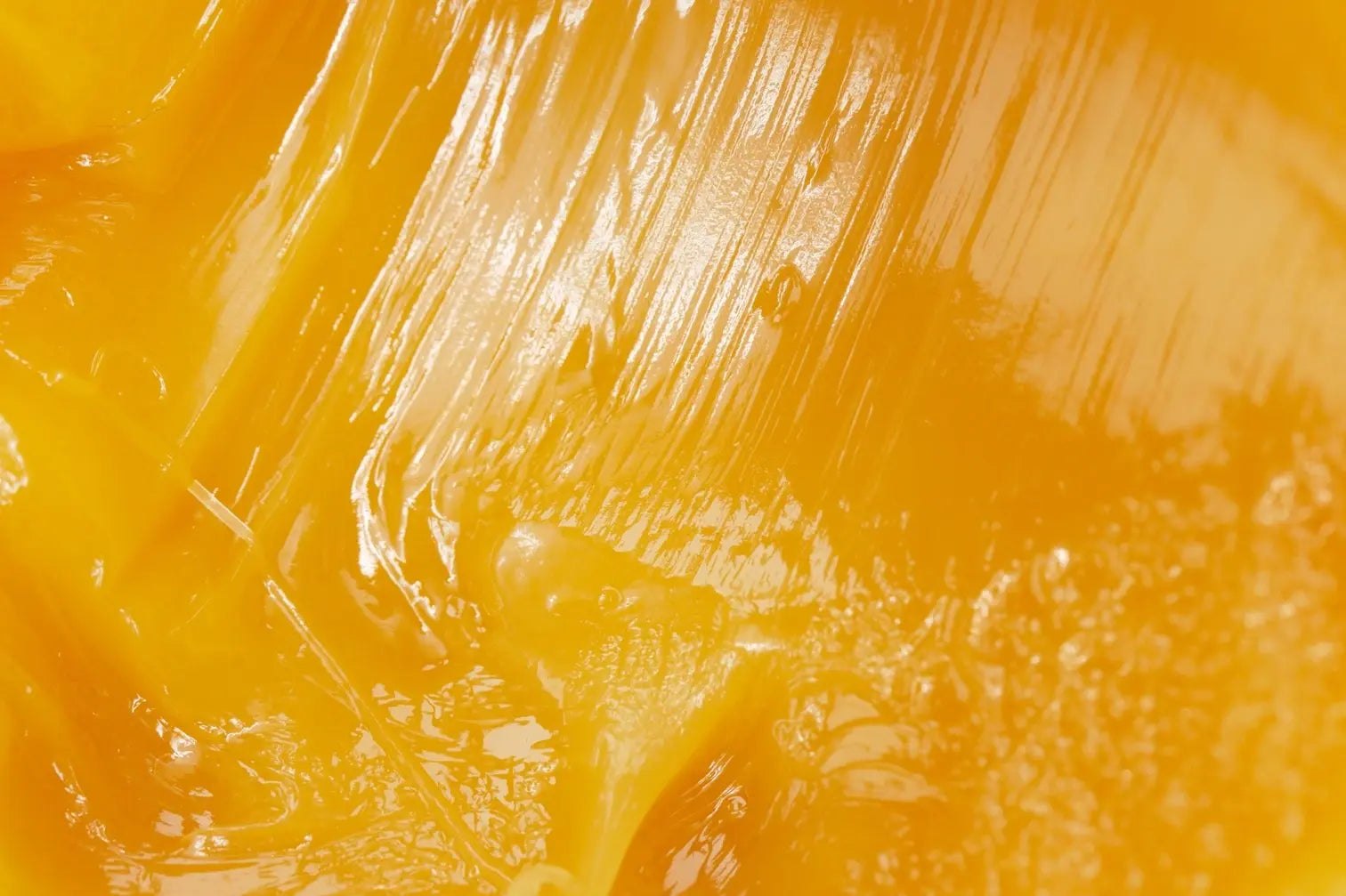What Exactly is Lanolin?
Lanolin is a waxy substance secreted by the sebaceous glands of sheep that gives wool its natural waterproof coating. This natural wax is then extracted through a purification process where the wool is scoured, washed, and then centrifuged to concentrate the lanolin.1 Chemically, it’s a complex mixture of esters, fatty acids, and alcohols, which collectively create a substance known for its hydrating qualities. This composition is responsible for lanolin's extraordinary ability to hold up to 400% of its weight in water, making it an exceptional emollient.2 The molecular structure of lanolin closely resembles that of human skin oils, which is why it integrates seamlessly into the skin barrier, enhancing its ability to prevent moisture loss.
Due to its excellent emollient properties, lanolin acts as a moisturizer that soothes and softens the skin. How? By forming an occlusive barrier that physically traps water in the skin by creating a seal over its surface.3 This prevents transepidermal water loss (TEWL), which is the evaporation of water from the skin’s deeper layers to the external environment. By limiting TEWL, lanolin helps maintain the skin's hydration levels, keeping it moist and supple further helping to prevent chapped and dry skin.4 Because of these characteristics, lanolin is widely used in creams, balms, and ointments intended for dry, rough, or cracked skin.
Lanolin use extends beyond personal care. In the pharmaceutical industry, it’s employed as a base for ointments, creams, and salves as the viscous nature ensures these products maintain a consistent texture and don’t separate over time. Lanolin also enhances the skin's absorption of active ingredients by increasing their contact time with the skin and providing a medium through which they can be evenly distributed and absorbed.5 In cosmetics, it enhances the texture and application properties of products like lipsticks and makeup bases, further proving its versatility.
Concerns with Lanolin in Skincare
While lanolin is celebrated for its benefits, it’s not without its problems. A lot of people wonder, “Why is lanolin bad for skin?” One of the most significant concerns is its potential to cause allergic reactions. The allergic reaction to lanolin typically manifests as contact dermatitis,6 which includes symptoms such as:
- Redness and irritation
- Itching
- Swelling
- Rash or hives
- Burning sensation
These symptoms usually occur at the site of application but can also spread to other areas. The severity can vary depending on individual sensitivity and the amount of lanolin used. These reactions are believed to be triggered by the impurities present in less refined forms of lanolin rather than by the purified lanolin itself.7

Seeking Lanolin-Free Alternatives
-
Shea Butter:
A fat extracted from the nuts of the shea tree, commonly used in cosmetics for its rich moisturizing properties as well as its anti-inflammatory properties, which help soothe irritated skin and may reduce redness and swelling.9
-
Squalane: A lightweight, non-greasy oil that mimics the skin's natural sebum, making it an excellent moisturizer that doesn’t clog pores. Squalane also has antioxidant properties, helping to protect the skin from damage caused by free radicals
.10
- Jojoba Oil: Resembles the sebum that human skin produces, which allows it to enhance the skin’s moisture barrier without triggering acne. Jojoba oil is also rich in anti-inflammatory and healing properties, which makes it beneficial for skin conditions such as acne, eczema, and psoriasis [11].
- Hyaluronic Acid: A powerful humectant that attracts and holds onto water molecules, making hyaluronic acid one of the best ingredients for hydration, particularly it helps to plump the skin, reducing the appearance of fine lines and wrinkles [12]. It’s also one of the key supporting ingredients in our daily facial moisturizer, OS-01 FACE
Making Informed Skin Care Choices
- Benefits in Skincare and Beyond: Lanolin serves as an effective moisturizer in skincare by forming an occlusive barrier that traps water and maintains the skin's hydration
- Potential for Allergic Reactions: Despite its benefits, lanolin can cause allergic reactions such as contact dermatitis, characterized by redness, itching, swelling, and rashes
- Comedogenic Concerns: Lanolin's thick, waxy consistency may clog pores, particularly in individuals with oily or acne-prone skin. This can lead to the formation of comedones and exacerbate acne, making lanolin a potential issue for those with certain skin types
- Lanolin-Free Alternatives: For those with sensitive skin, acne prone skin, or concerned about lanolin’s comedogenic properties, alternatives like shea butter, squalane, jojoba oil, and hyaluronic acid offer similar moisturizing benefits without the associated risks
- Informed Skincare Choices: Examine skincare labels carefully and be cautious of not only lanolin but also other potentially harmful ingredients such as certain alcohols, fragrances, parabens, sulfates, phthalates, mineral oil, talc, petrolatum, and paraffin.



